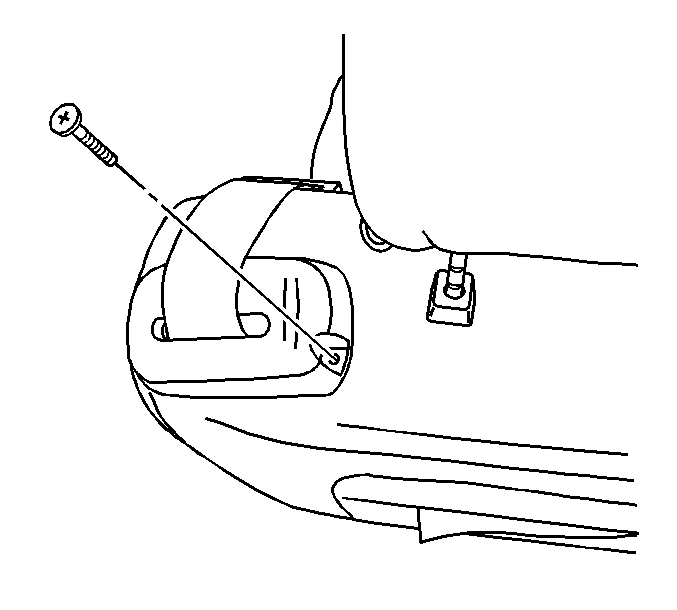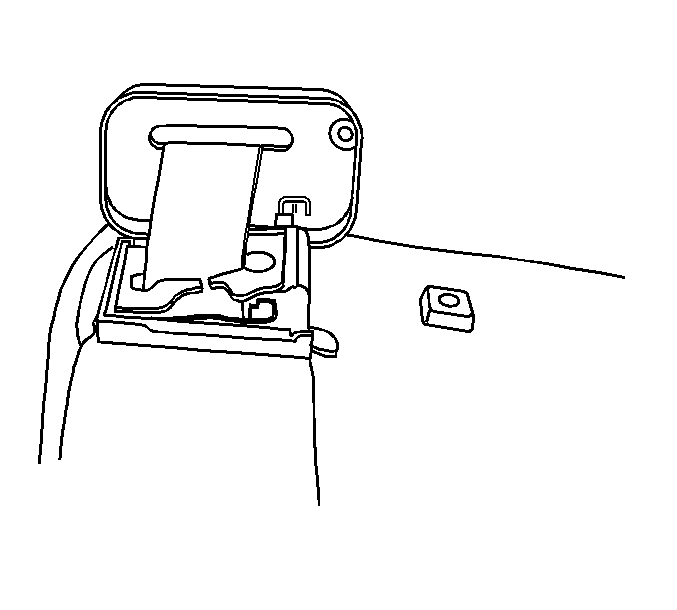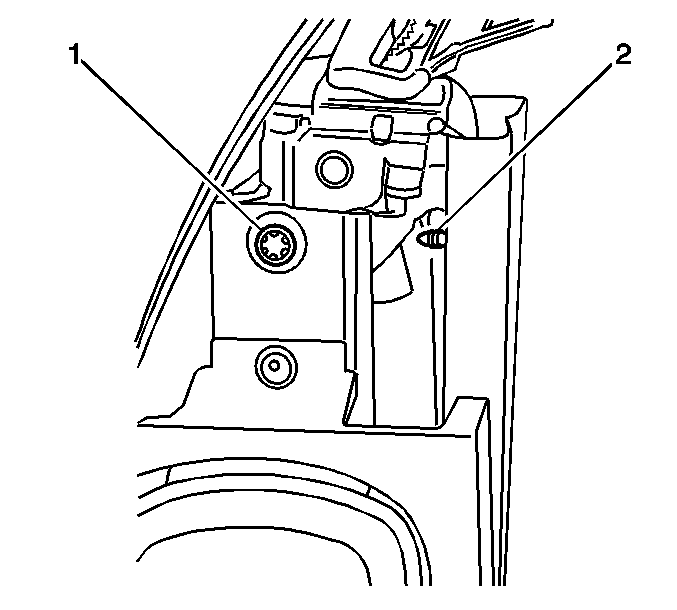Removal Procedure
- Remove the seat switch bezel. Refer to Driver Seat and Passenger Seat Adjuster Switch Bezel Replacement .
- Remove the seat trim panel. Refer to Seat Cushion Outer Trim Panel Replacement .
- Remove the seat belt anchor nut from the seat adjuster assembly.
- Remove the screw from the front seat back seat belt bezel.
- Slide the bezel towards the seat belt buckle.
- Remove the seat back cover and pad. Refer to Front Seat Back Cushion Cover and Cushion Pad Replacement .
- Remove the seat back panel from the seat back frame. Refer to Driver Seat and Passenger Seat Back Cushion Finish Panel Replacement .
- Remove the seat belt from the retractor bracket by sliding the seat belt through the slot.
- Remove the push pin (2) from the seat back frame.
- Disconnect the electrical connector from the pretensioner.
- Remove the lower seat belt retractor retaining bolt.
- Remove the retractor assembly from the seat.





Installation Procedure
- Position the assembly to the seat.
- Install the lower seat belt retractor retaining bolt.
- Connect the seat belt pretensioner electrical connector.
- Install the push pin (2) on the seat back frame.
- Install the seat belt into the retractor bracket by guiding the seat belt through the slot in the bracket.
- Install the seat back panel to the seat back frame. Refer to Driver Seat and Passenger Seat Back Cushion Finish Panel Replacement .
- Install the seat back pad and cover. Refer to Front Seat Back Cushion Cover and Cushion Pad Replacement .
- Slide the front seat back seat belt bezel onto the seat belt.
- Install the seat belt bezel to the retractor bracket with the screw.
- Install the seat belt anchor to the seat adjuster assembly with the nut. Ensure that the seat belt webbing is not twisted.
- Install the seat trim panel. Refer to Seat Cushion Outer Trim Panel Replacement .
- Install the seat switch bezel. Refer to Driver Seat and Passenger Seat Adjuster Switch Bezel Replacement .

Notice: Use the correct fastener in the correct location. Replacement fasteners must be the correct part number for that application. Fasteners requiring replacement or fasteners requiring the use of thread locking compound or sealant are identified in the service procedure. Do not use paints, lubricants, or corrosion inhibitors on fasteners or fastener joint surfaces unless specified. These coatings affect fastener torque and joint clamping force and may damage the fastener. Use the correct tightening sequence and specifications when installing fasteners in order to avoid damage to parts and systems.
Tighten
Tighten the seat belt retractor bolt to 55 N·m (40 lb ft).



Tighten
Tighten the front seat back seat belt bezel screw to 6 N·m (53 lb in).

Tighten
Tighten the seat back anchor nut to 52 N·m (38 lb ft).
